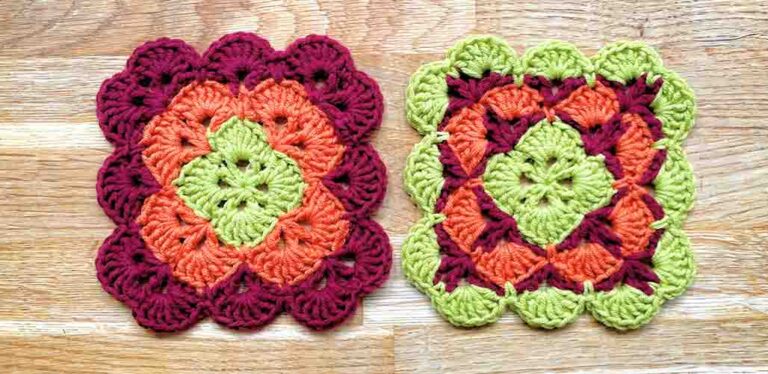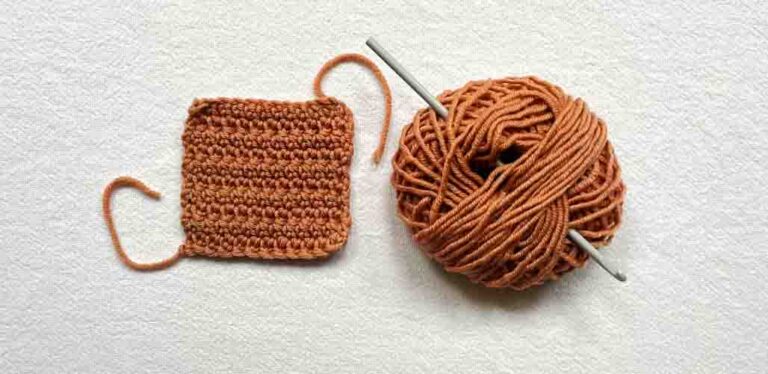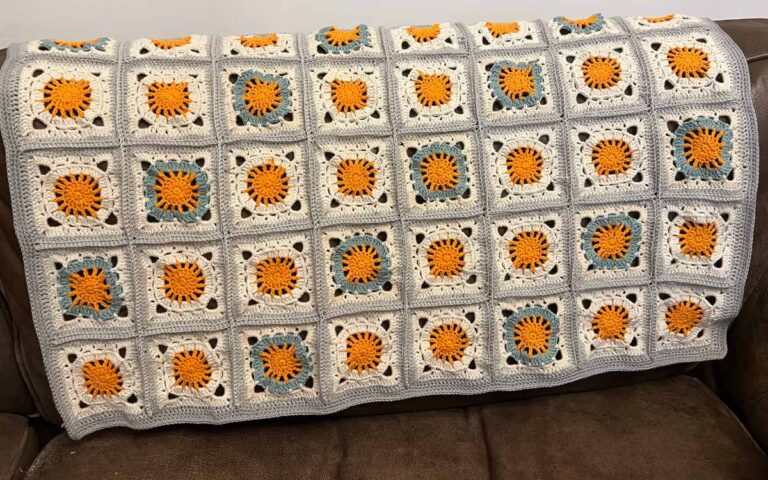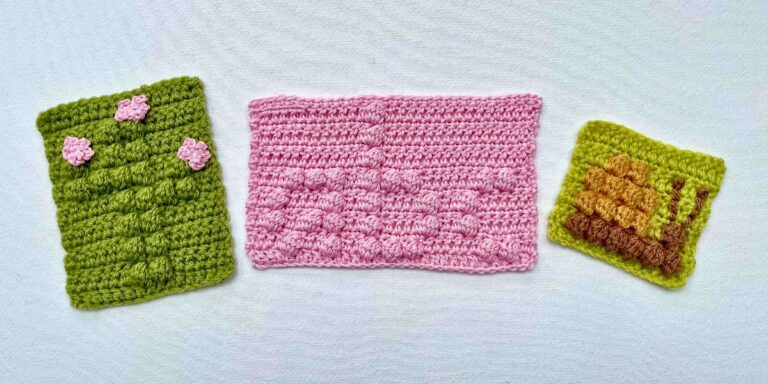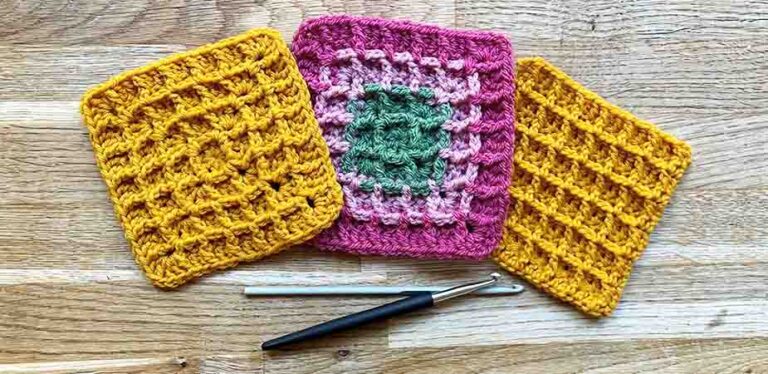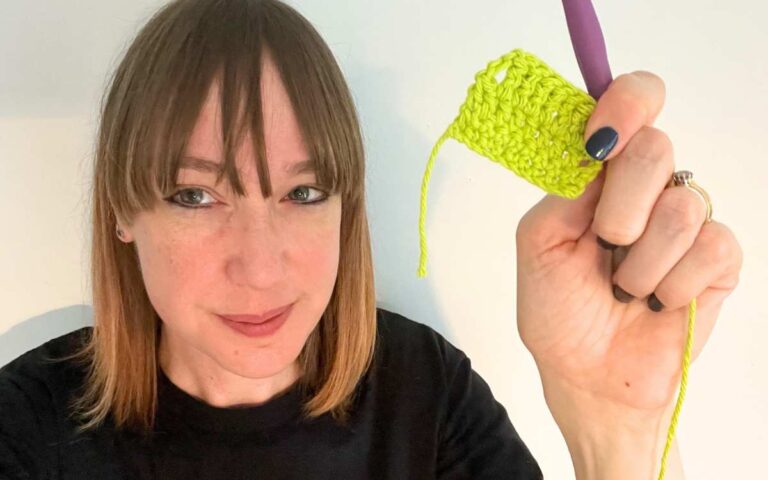Crochet Shell Stitch Variations

Shell stitches are the easiest way for you to add texture and something special to your crochet projects. There are many crochet shell stitch variations for you to choose from, which all involve working multiple long stitches into one single stitch from the previous row, so they fan out in a clam shell shape. You could have a different shell stitch for every occasion! You will find big ones and small ones, solid ones and lacy ones, and even a choice of flat or three dimensional ones! I’d struggle to pick a favorite, but here are ten you ought to know about.
Contents
- What use are shell stitches?
- Picking your shell stitch
- 10 crochet shell stitch variations to try
- Tips for great results
What use are shell stitches?
Shell stitches are a classic of crochet. They are all characterized by clusters of double crochet stitches worked into one single stitch from your previous row, so that they fan out in a clam shell shape. You might consider them a bit kitsch, but modern crocheters are reinventing shells in fresh patterns which can’t be machine replicated. Shell stitches aren’t just a hallmark of your handmade craft however. You can use shell stitches to add visual interest and texture to all kinds of projects:
- Sweaters and cardigans.
- Light summer tops.
- Blankets – either use one shell stitch alone, or alternating with rows of other stitches for a striped afghan design.
- Scarves and shawls.
- Beanie hats.
The versatility of shell stitches means the original design has been modified many times!
Picking the right shell stitch
With so many crochet shell stitch variations to choose from, how should you pick one for your next project? If you are new to crochet, the solution is to pick a designer’s crochet shell stitch pattern with clear instructions. You experienced crocheters, making original scarves, blankets, snoods, shawls or ponchos without a pattern, you’ll need to consider density, drape and stitch scale.
Density
Some of your shell stitches are more ‘holey’ than others. This affects the garment’s warmth. Variations with big gaps between stitches are also more likely to snag on things, such as the hardware on your purse, or your baby’s fingers if used for a blanket.
Drape
Drape is closely linked to density. Dense shell stitches are more rigid, whilst ‘gappy’ shell stitches are more fluid. But fiber content and hook size also change how supple your crochet will be. You will want to experiment with a couple of swatches before embarking on something big like a blanket.
Scale
You’ll find shell stitches are shorter and/or narrower than others. The number of foundations stitches you need for each repeat varies from as few as 5, to as many as 14. Small crochet shell stitch variations can be monotonous for you to reproduce on a large scale, whilst large shell stitches might not work on small or narrow projects like your scarves and beanies, because there isn’t enough space for the pattern to really reveal itself and make an impact.
10 crochet shell stitch variations to try
If you haven’t made anything in a shell stitch before, here are 10 shell stitches for you to try:
- Classic, a.k.a. solid
- Stacked
- Iris
- Wavy
- 3D #1
- 3D #2
- 3D diamond
- Long loop
- Open
- Puffed
Classic shell stitch

The original shell stitch, also known as solid shell stitch because it is relatively un-gappy. The shells in each row are staggered, so that they nestle inside the dips between the shells of the row below. The result is a gentle undulating texture, which is perfect for cozy sweaters. Here’s how you make it:
Stacked shell stitch
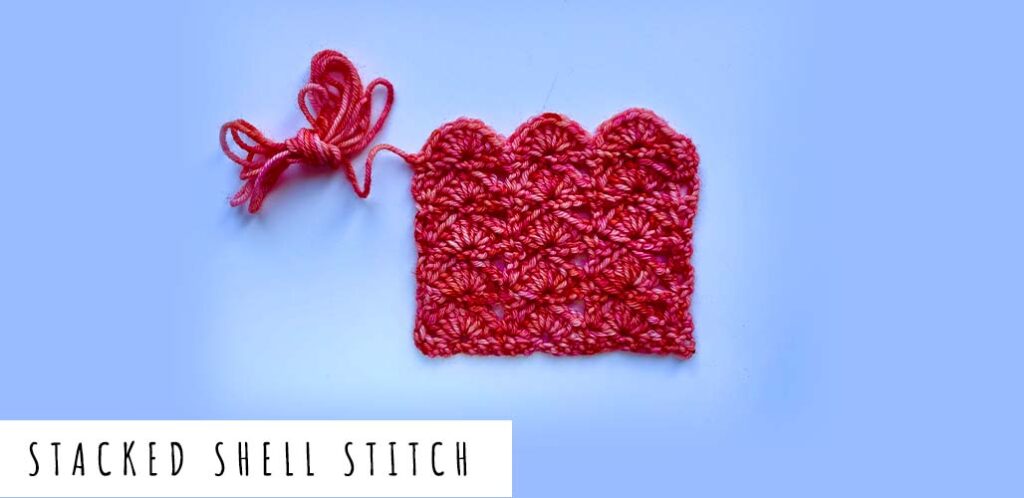
All crochet shell stitch variations are either staggered, like the solid stitch above, or stacked, like this one. In stacked patterns, the point of each shell sits on the apex of the shell below it. The result is more bold and geometric, and an interesting mix of solid and see-through. It’s also a bit less yarn-hungry than the solid stitch, whilst remaining true to its roots. You crochet it like this:
Iris shell stitch

Is it technically a shell stitch? Some people wouldn’t classify this as one, but I’m not going to leave it out and rob you of the chance to decide for yourself! Iris shell stitch is one of the quickest to make, thanks to its stacked design, and a high proportion of chain stitches. It’s perfect for summer tops, and looks especially nice made in bamboo yarns. You will find it straightforward to make – you can learn the pattern in a snap here:
Wavy shell stitch
Wavy shell stitch is a super wide variation on shell stitch. Its rows are staggered, but because everything has been stretched out widthways, you can appreciate how alternating rows are also stacked. Since it’s wide, it works really well on throws and blankets. Pay attention the first time you try this stitch, because there is quite a bit of counting involved! You will see what I mean here:
3D shell stitch #1
3D shell stitches are great because several of them (like this one) look pretty much the same from either side. That is, they have no ‘right’ or ‘reverse’ side. They’re also perfect for showcasing smooth non-stretchy fibers, like cotton yarns. And they make a fun alternative to working with flat stitches. You will find variation is easy to learn, quick to work up, and super versatile:
3D shell stitch #2
Are you looking for a shell stitch which really lives up to the name? Look no further than this stitch. It will look amazing as a blanket for a kid who loves mermaids or sea creatures. Note: this 3D crochet shell stitch does have a right side and a wrong side!
3D diamond shell stitch
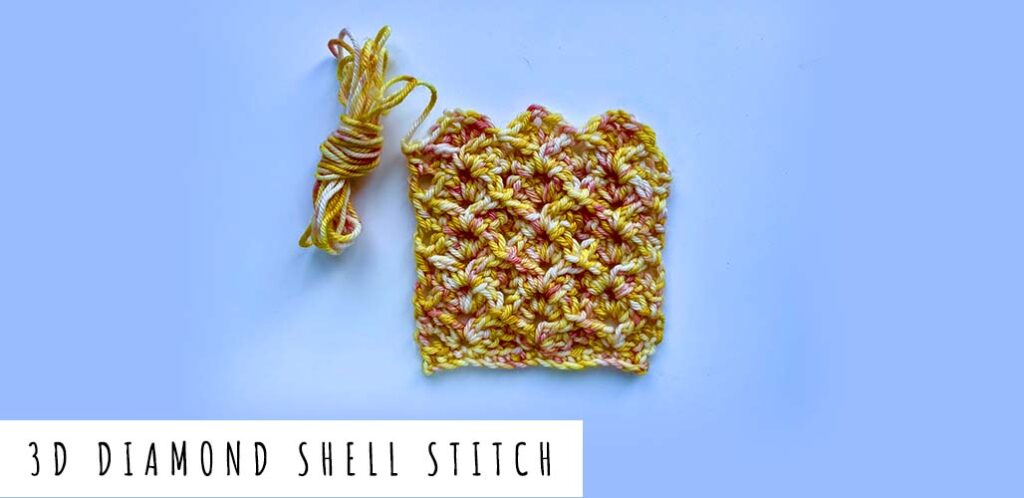
This is one of those stitches which makes you wonder how anyone ever thought it up. That’s not to say it’s very complex or difficult – it’s surprisingly simple in fact. It looks especially good worked up in cotton thread, and reminds me of waffle blankets more than sea shells. But I’m not going to argue with the name, and I am going to take this opportunity to show it off, because I love it! It’s a great choice for you to make blankets with, because it traps a nice thick layer of warm air.
Follow along with a video tutorial here:
Long loop shell stitch
This one really does look like rows of clam shells! The inclusion of ultra-long treble stitches means this variation is dense and warm, but also drapes softly – perfect for snuggly scarves and snoods. Here’s how you do it:
Open shell stitch
If you liked the iris shell stitch, here’s something similar-but-different to consider. Open shell stitch is incredibly quick and light on yarn to make – perfect for single-skein projects, and done-in-a-weekend projects. You can give it a try like this:
Puffed shell stitch
When does a shell stitch become a puff stitch, and when does a puff stitch become a shell stitch? It’s a fine line, and this one is definitely somewhere in the middle! It’s an eye-catching choice for a very statement sweater, or a cute pick for a baby blanket. You can learn it’s secrets in this tutorial:
Tips for great results
Whichever take on shell stitch you’re going to try first, here are some tips for getting maximum satisfaction:
- Consider cotton yarn. You can use any yarn you like (all the swatches I made for this article are wool, or wool/nylon blends from my stash, for example). But cotton yarns and shell stitches really show off each other’s best qualities.
- Block your work. Once you’ve made the decision to use a visually interesting stitch, and put the time and effort into making it, you owe it to yourself to show it off properly. And that means blocking it.
- Try stripes. Shell stitches, especially variations where the rows are staggered look a-maz-ing in stripes.
Crochet shell stitch variations – summary
You have so many shell stitch variations to make, all following the same basic premise: if you put lots of long stitches into a single stitch from the previous row, the results look like a shell. Beyond that, there are lots of ways of using shell stitches depending on whether your want a warm and dense fabric, or a light and lacy one. My favorite use for shell stitches is on stash-busting striped afghan blankets, where every row is a different color and a different stitch. I’d love to hear what you use them for as well though! Do you have a favorite shell stitch? And don’t forget to try out a fun alternative – the extended version of the single crochet!

